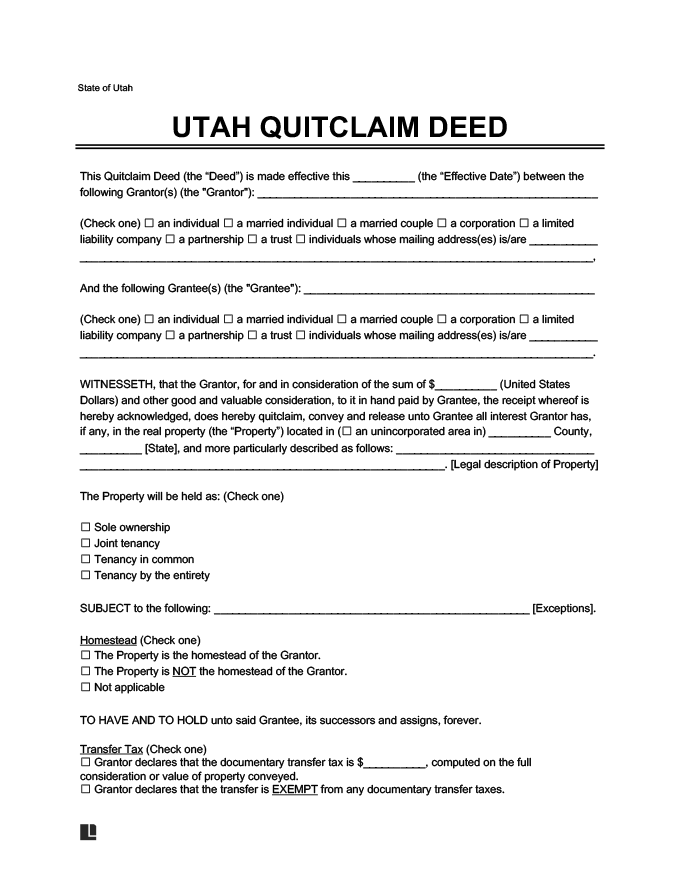When filing a quitclaim deed in Utah, it is important to carefully follow these steps so your document is valid and enforceable.
Step 1: Reference the Original Deed
A quitclaim deed must contain a legal description of the property you’re conveying. This description must match the description in the original deed. Obtain and reference the original deed to ensure you record all boundary lines and other details properly.
If you don’t have access to the original deed, you can request a copy from your local county recorder’s office. Most county recorder’s offices charge fees to obtain documents, so you can prepare to pay a small fee to access the deed.
Step 2: Consult an Attorney
Matters involving property transfer can be complicated. Seeking legal guidance from an attorney qualified to handle property transfers helps ensure you complete and file the deed properly.
Step 3: Complete the Quitclaim Deed
Use our form to fill out all the required sections of your quitclaim deed, including the names and addresses of both parties, the consideration, the date of the agreement, and the legal description of the property.
Step 4: Complete the Water Rights Addendum
Complete the Water Rights Addendum to add it to your quitclaim deed. State law requires the grantor to complete this form regardless of whether the property transfer involves water rights (Utah Code § 57-3-109).
Clearly outline the transfer of water rights, if applicable. If the conveyance doesn’t involve water rights, note this detail in the addendum.
Step 5: Sign and Notarize
Once you complete the deed and the accompanying Water Rights Addendum, sign the finished deed in the presence of a notary public. You can usually access a notary at your local county recorder’s office, but many banks, courthouses, and law offices also have notaries available. The Utah State Notary Office offers an online search for notaries in your zip code.
Be sure to bring personal identification when getting your deed notarized. As specified by Utah Code § 46-1-2, valid forms of identification for notaries in Utah are:
- A United States passport.
- Government identification containing a photograph, physical description, and signature.
Notaries in Utah sometimes charge a small fee to notarize documents. Under Utah Code § 46-1-12, notaries can charge up to $10 per signature.
Step 6: File with the County Recorder
File your signed and notarized deed with your local county recorder’s office. County recorder’s offices typically charge a small fee to file documents. These fees vary from county to county, but the standard is $40 per instrument with no page limit (Utah Code § 17-21-18.5(1)(b)).
Double-check that your quitclaim deed abides by the formatting requirements specified by Utah state law. Ensure the text and signatures are legible enough for the county recorder’s office to make multiple copies.
